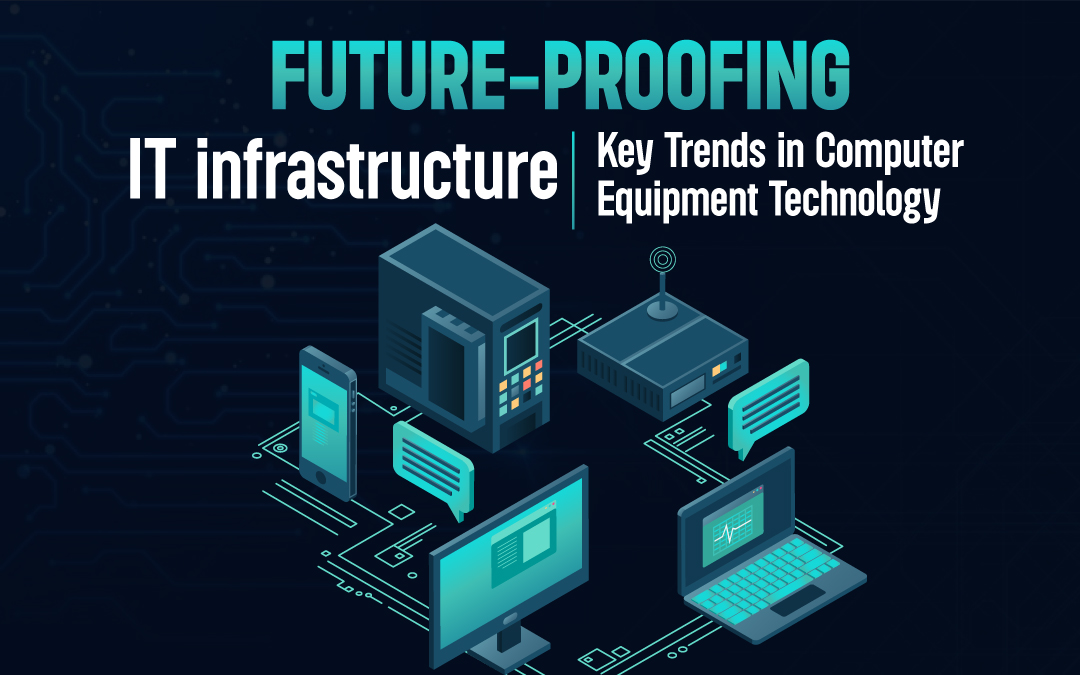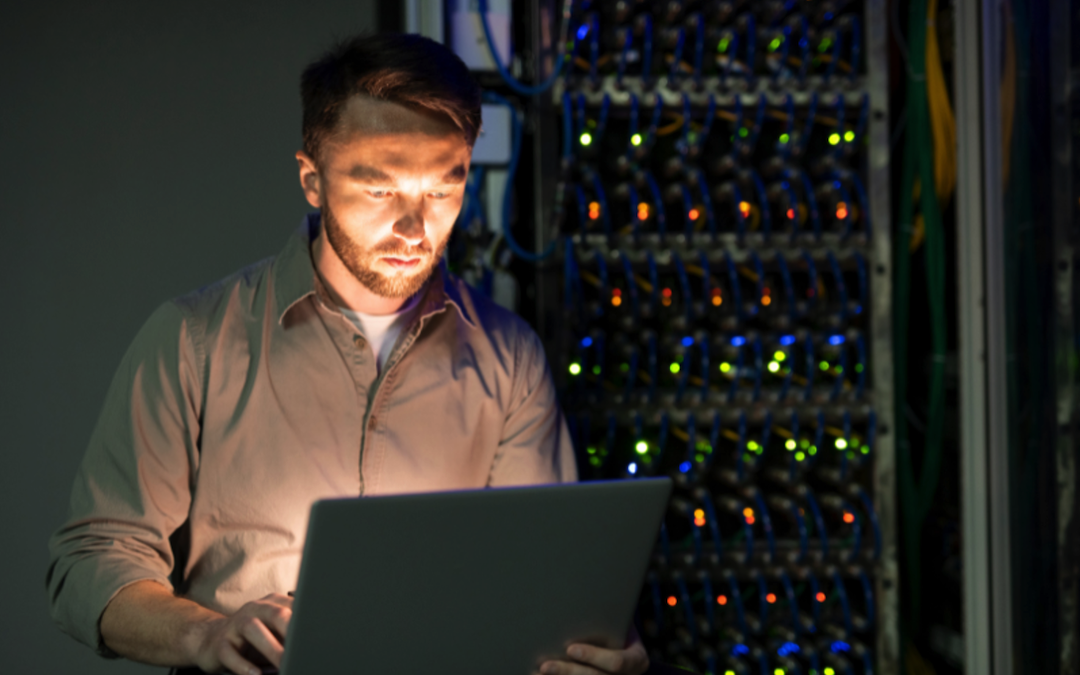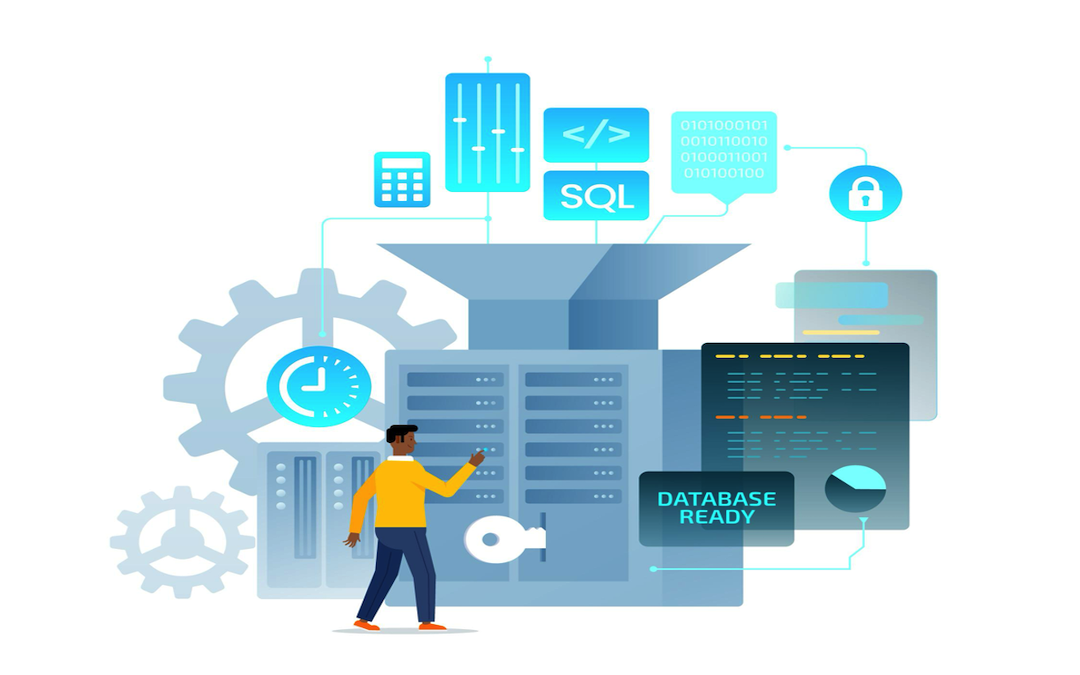
The blistering pace of technological progress has squarely placed IT at the forefront of the global economy, where it quietly orchestrates the operational beats of the corporate heart. IT systems can't afford to stand still - the rapid pace of digital change demands adaptable strategies and infrastructures that keep up. Think tank directors echo a mantra: no IT structure can stagnate. Building space for adaptability, and integrating surprise-tolerance into our existing architecture, we spare our businesses endless renovation headaches. Technology doesn't take a breather, and neither can we when our data centers, networks, and compute capabilities rely on being on the cutting edge. Here's what's trending in computer hardware - the essential know-how to safeguard your IT setup for what's to come.
The Shift to Cloud Computing
You cannot discuss the future of IT without highlighting the significant shift towards cloud computing. Need computing power on demand? Cloud computing is the answer, allowing users to tap into a robust network of servers, storage, databases, and software via the Internet, leading to prompt innovation and the promise of significant cost savings. Businesses that make the leap to the cloud reap a multitude of rewards, but three significant perks, in particular, have CEOs hooked: saving money, getting bigger fast, and making it easy for everyone to access what they need.
Benefits of Cloud Infrastructure
- Scalability: When workloads surge, cloud services flex to meet the demand, accommodating spikes in traffic by ramping up or scaling back resources on the fly.
- Cost-efficiency: It eliminates the capital expense of buying hardware and software and setting up and running on-site data centers.
- Accessibility: Offers the flexibility to work from anywhere, as long as there is an internet connection, enhancing productivity and collaboration among teams.
A ripple effect of demands is triggered when IT equipment needs are influenced, leading to considerable alterations in the infrastructure.
As more businesses take to the cloud, the requirements for IT gear are getting a major overhaul. This sea change is refashioning the very fabric of demand. Traditional, bulky on-premises hardware is increasingly being supplanted by leaner, cloud-compatible solutions. With cloud computing on the rise, optimizing network infrastructure and reinforcing security measures are now top priorities to prevent data breaches.
Embrace of Edge Computing
Parallel to the growth of cloud computing is the rise of edge computing. According to the software development company CISIN, edge computing refers to processing data near the edge of your network, where the data is being generated, instead of in a centralized data-processing warehouse. With billions of devices communicating in IoT, self-driving cars, and futuristic cities, we're seeing massive latency and connectivity bottlenecks, making local processing and instant decision-making a top priority. CIS
Impact on Network Design and Infrastructure
Edge computing necessitates a robust, distributed network design that can handle vast amounts of data at the edge. Edge processing calls for serious upgrades to both hardware and software—the kind that can cram powerful punch into compact packages that thrive in a variety of settings.
The buzz around quantum computing is getting louder, and for good reason - this tech is on the cusp of a major breakthrough.
Computing just got a whole lot faster with quantum computing, a game-changer that's still learning to walk. Unlike classical computing, which uses bits as the smallest unit of data (0s or 1s), quantum computing uses quantum bits or qubits, which can exist in multiple states simultaneously. Imagine being able to crush cybersecurity threats, solve seemingly insurmountable problems, and create futuristic materials – this breakthrough attribute makes it all possible.
Data security is on high alert: the advent of quantum computing is rendering our encryption methods obsolete, and a new strategy is urgently needed. Classical computers are slow to tackle certain problems, but this computer cranks through them at lightning speed. It's the difference between days and decades, and it opens doors to huge breakthroughs in areas like cryptography and drug discovery.
The Role of AI and Machine Learning
The paradigms of artificial intelligence (AI) and machine learning (ML) are increasingly being integrated within IT infrastructures to manage and optimize operations. Maintaining top security becomes more efficient than ever with cutting-edge tech powering real-time analysis and swiftly resolving anomalies.
Computer equipment is getting a serious intelligence boost, and the future looks awesomely robotic.
Picture an IT landscape where systems self-heal and fine-tune on their own, freeing humans to focus on more strategic pursuits. This autonomous future promises unparalleled IT efficiency and reliability.
Energy Efficiency and Sustainability
As digital infrastructures expand, so does their environmental footprint. Riding the tide of environmental activism, visions for a greener IT future are crystalizing, fueled by breakthroughs in low-wattage computing and progressive, eco-centric IT strategies. With breakthroughs in low-power processing, cooling on a dime, and tapping into clean energy, the IT industry is stepping up its eco-game.
Tightened digital shields
In the fast-paced world of cybersecurity, just staying afloat means consistently upgrading hardware and firmware to stay one step ahead of malicious actors. With security threats escalating, a fresh approach is emerging. One that emphasizes designing safety into the very fabric of our equipment, backed by powerful technologies like hardware authentication and physically unclonable functions that keep our data locked down tight.
Suddenly, devices are talking to each other
The more devices that join the IoT party, the more potential weak spots we create - and each one requires its own brand of management and security expertise. Countering the exponential growth of devices in the IoT era means more than just slapping together patchwork solutions - it demands radically resilient connectivity frameworks that prioritize security above all.
The Importance of Compatibility and Interoperability
As technology evolves at a breakneck pace, compatibility and interoperability become crucial for preventing obsolescence. Imagine having an IT system that remains agile and adaptive, no matter what the future brings. This begins with selecting equipment that supports open standards, allowing it to plug in effortlessly with current technologies and empowering you to harness emerging innovations as they arise.
Conclusion
Keeping pace with the dizzying array of technological innovations is no easy feat, but the alternative is unthinkable: being fossilized in an outdated IT infrastructure. The race to future-ready IT is on. Cloud computing gets a turbo boost, edge computing sharpens its edge, and the quantum leap awakens. Businesses that harness AI and ML, prioritize the planet, and shield themselves from cyber threats can then seamlessly connect devices and systems, forging unbreakable bonds. Think of staying agile as navigating uncharted territory, where acuity, peripheral vision, and an analytical mindset are the only guarantees of avoiding the potholes and potholes that come with rapid-fire innovation.
What if those emerging trends didn't thwart your progress, but turbocharged it instead? That's the sweet spot forward-thinking organizations can hit when they pinpoint these critical areas, channeling potential speed bumps into fuel for astonishing innovation and rapid growth.
Related Posts
Share this post
Leave a comment
All comments are moderated. Spammy and bot submitted comments are deleted. Please submit the comments that are helpful to others, and we'll approve your comments. A comment that includes outbound link will only be approved if the content is relevant to the topic, and has some value to our readers.



Comments (0)
No comment